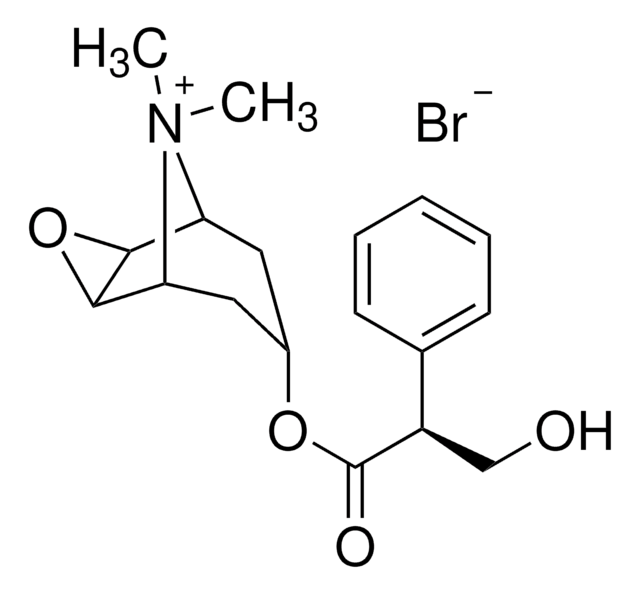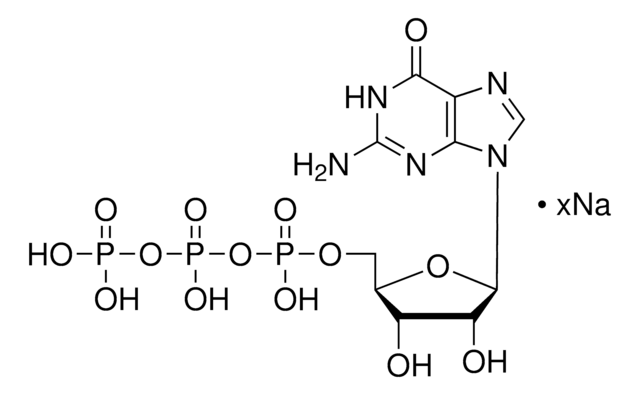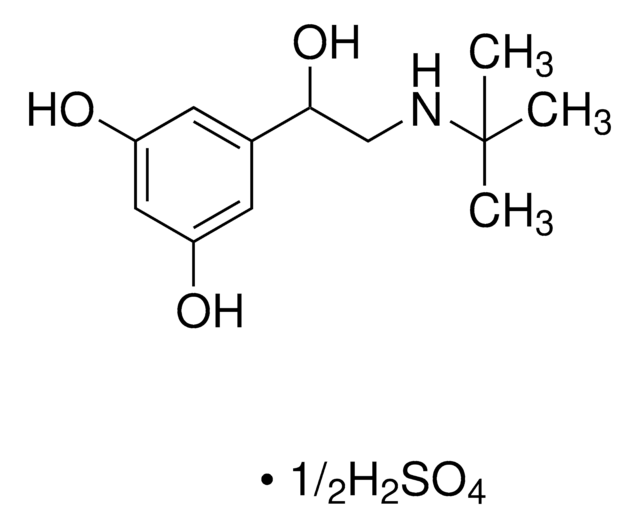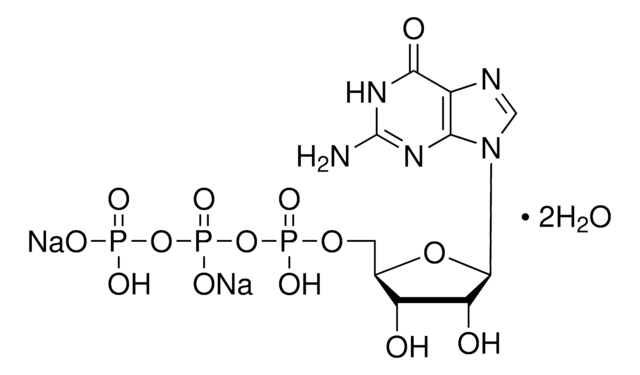S2250
(−)Scopolamine methyl nitrate
Sinónimos:
Hyoscine methyl nitrate, Methscopolamine nitrate
About This Item
Productos recomendados
solubility
water, high purity: 50 mg/ml
SMILES string
[O-][N+]([O-])=O.C[N+]1(C)C2CC(CC1C3OC23)OC(=O)[C@H](CO)c4ccccc4
InChI
1S/C18H24NO4.NO3/c1-19(2)14-8-12(9-15(19)17-16(14)23-17)22-18(21)13(10-20)11-6-4-3-5-7-11;2-1(3)4/h3-7,12-17,20H,8-10H2,1-2H3;/q+1;-1/t12?,13-,14?,15?,16?,17?;/m1./s1
InChI key
BSQIVYOSLFLSGE-UXXRHRDBSA-N
Gene Information
human ... CHRM1(1128) , CHRM2(1129) , CHRM3(1131) , CHRM4(1132) , CHRM5(1133)
Application
Biochem/physiol Actions
signalword
Danger
hcodes
Hazard Classifications
Acute Tox. 1 Dermal - Acute Tox. 2 Inhalation - Acute Tox. 2 Oral
Storage Class
6.1A - Combustible acute toxic Cat. 1 and 2 / very toxic hazardous materials
wgk_germany
WGK 3
flash_point_f
Not applicable
flash_point_c
Not applicable
Certificados de análisis (COA)
Busque Certificados de análisis (COA) introduciendo el número de lote del producto. Los números de lote se encuentran en la etiqueta del producto después de las palabras «Lot» o «Batch»
¿Ya tiene este producto?
Encuentre la documentación para los productos que ha comprado recientemente en la Biblioteca de documentos.
Nuestro equipo de científicos tiene experiencia en todas las áreas de investigación: Ciencias de la vida, Ciencia de los materiales, Síntesis química, Cromatografía, Analítica y muchas otras.
Póngase en contacto con el Servicio técnico









